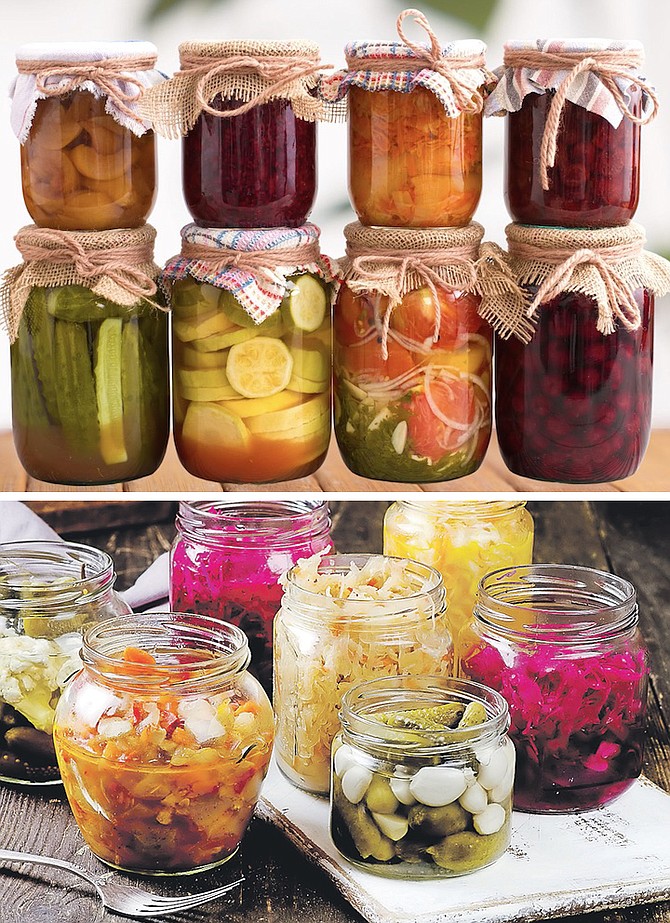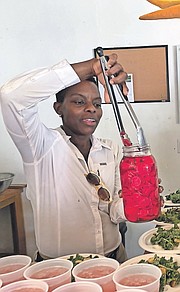ONE Eleuthera Foundations’ Tim Hauber speaks about the various methods of food preservation with the view of food security and independence.
By Tim Hauber
of One Eleuthera Foundation
IN MY last article, I wrote about becoming more “food independent” as a nation by growing our own food at home and by supporting local agriculture. I was pleased by the feedback I received from people inspired to start or revive their home gardens.
We are now already in the month of March and the growing season for most vegetables is well under way and in fact the end of the growing season is already in sight as the sun intensity gets stronger every day.
Most vegetables become almost impossible to grow once we reach the month of May because of the intensity of the sun and the frequency of the rains that typically begin in May or June. Now is the time to preserve products from our garden and from our local farmers.
Since our country’s growing season for many vegetables is actually quite short, we need to consider preserving our produce is some form or another so we can enjoy delicious produce during the upcoming hot, summer months when we are no longer able to grow these items.
This is a skill that many of our ancestors used as part of their regular life and food procurement practices. When Grammy grew up in Cat Island, she did not have tomatoes imported from Mexico in the grocery store so if she wanted to have tomatoes through the long summer months, she would bottle them during this time of year when the tomatoes are in good supply. I propose that we return to some of these practices to gain even more food independence as individuals and as a country.
When any local vegetable or fruit is in season then let’s make sure we enjoy it and incorporate it into our daily cuisine as much as possible but let’s also look a few months ahead and consider how we can preserve some of these items for use during the months when it will not be available in fresh supply from our garden or local farmers. There are many different ways of preserving food and today I can only mention a few but if you do some research, you will find ways of preserving almost every product that comes out of your garden.
Preserving food basically means that we treat the food in some way to prevent it from spoiling until it is consumed at a later date. There are many different ways of treating food in order to stop spoilage; including: dehydration, salt curing, canning/bottling, fermenting, pickling in vinegar, freezing, or preserving in sugar.
There are many different advantages of preserving our own food including:
- Prolonging the shelf life of the produce we have grown locally, thus reducing the need to import food.
- Reducing the amount of packaging we import into the country and waste we accumulate by reusing jars etc.
- Saving money by buying produce in bulk from local farmers when in season
- Creating personal empowerment by reducing our dependence on corporations to feed ourselves and our families.
- Enhancing flavors, as some preservation techniques will produce a unique and special product, such as making pickles from cucumbers or specialty hot sauces from local pepper varieties.
- Improving our resiliency as an island nation by reducing our need to import food.
CANNING/BOTTLING
Canning or bottling fruits and vegetables involves heating foods in cans or jars to pasteurize the contents. When done properly many foods can be successfully preserved with this technique and enjoyed throughout the year.
Tomatoes have been preserved using this technique for many years in The Bahamas. There are a wide variety of sauces, salsas and chutneys that can be preserved by canning.
DRYING
Many food products can be preserved by removing the water from the fruit or vegetables. Once the water has been removed by drying, the spoilage organisms cannot survive thus keeping the product safe for consumption later.
Foods can be dried by the sun, dehydrator or in a typical home oven. Historically conch has been preserved by drying it in the sun.
Items such as grits, corn or pigeon peas are dehydrated by the air and sun as part of the farming technique so these items can be stored for long periods of time without spoiling.
If you have a dehydrator at home, you can dry almost any fruit and make a tasty snack or baking ingredient for later in the year.
When mangoes are in season our family collects the hairy mangoes and we extract the juice which we put into the dehydrator to make fruit leather, a delicious snack!
You can dehydrate many different vegetables to be used later in soups and stews. When you have more kale coming out of your garden than you can eat then consider making kale chips in the dehydrator. This too is a delicious and healthy snack!
FREEZING
By freezing your fruits or vegetables you are preserving the food for future consumption. This is a relatively easy way of preserving foods, but it uses a lot of electricity to keep your freezer full and frozen all year long; however, when you have a big bag of mangoes that you just cannot eat fast enough then the freezer is a quick way to save the mangoes before they spoil.
Simply put the mango flesh into zip loc bags and throw them in the freezer and you will have local mango deliciousness in the middle of winter!
PICKLING
Pickling vegetables in vinegar is another method of preserving fresh vegetables. The vinegar drops the pH and prevents spoilage organisms from damaging your produce.
There is almost no limit to the variety of vegetables and combinations of vegetables that can be preserved by pickling.
Pickled onions have a long tradition in The Bahamas and many of the locally made hot sauces are actually shelf stable due to the use of vinegar.
FERMENTATION
Fermenting vegetables is similar to pickling with vinegar except we do not add vinegar, but we add salt which then creates a suitable environment for certain ‘good’ bacteria to grow which in turn produces acid that preserves the vegetables in the same way as vinegar.
By doing salt fermentation we can get a more complex flavor profile and we eliminate the need for buying vinegar.
Pickles are traditionally made by fermentation as is Sauerkraut and Kimchi. Almost all vegetables can be preserved by fermentation and there is a lot of information available now regarding the health benefits of eating fermented vegetables.
SUGAR PRESERVATION
Jams and jellies are examples of preserving food using sugar.
By cooking the fruit and adding large amounts of sugar we reduce the water activity in the product and once again preserve our food by stopping the spoilage organisms.
Homemade guava jam is one such exquisite treat that never fails to put a smile on my face!
I challenge you this month to find a local source for some vegetables that are currently in season and find a way to preserve some for enjoyment later in the year!
There are many online sources and step-by-step videos that can provide guidance and inspiration. This can also be a fun activity and family tradition that you can reclaim and pass along to your children and future generations.
Later this year, the Centre for Training and Innovation (CTI) will be holding classes in Food Preservation for residents of Eleuthera.
Many of the techniques highlighted here will be taught as well as food handling and safety protocols.
Another advantage of producing preserved food items and value-added products is the potential to create additional income streams through the development of new and flavorful shelf stable foods.
These products can be sold and enjoyed locally and exported throughout the Caribbean and the world at large where there is a growing demand for authentic Caribbean flavors, condiments, and foods.
• Tim Hauber is the farm and growhouse operations officer at CTI & OEF. Established in 2012, the One Eleuthera Foundation (OEF) is a non-profit organisation located in Rock Sound, Eleuthera. For more information, visit www.oneeleuthera.org or email info@oneeleuthera. org. The Centre for Training and Innovation (CTI) is the first and only postsecondary, non-profit education and training institution and social enterprise on Eleuthera. CTI operates a student training campus in Rock Sound, Eleuthera, with a 16-room training hotel, restaurant and farm. For more information about CTI’s programmes email: info@oneeleuthera.org.








Comments
Use the comment form below to begin a discussion about this content.
Sign in to comment
Or login with:
OpenID